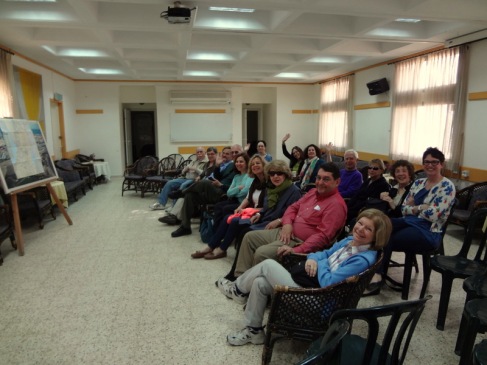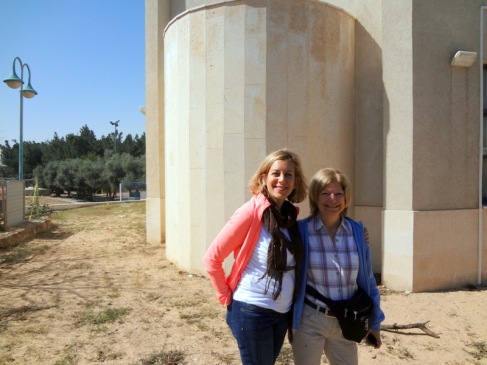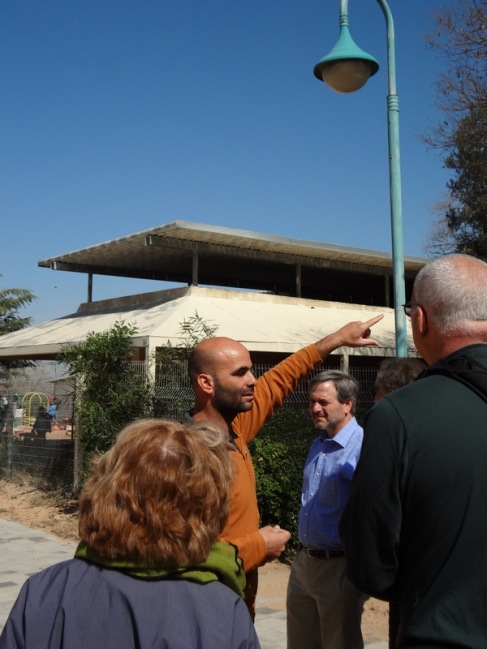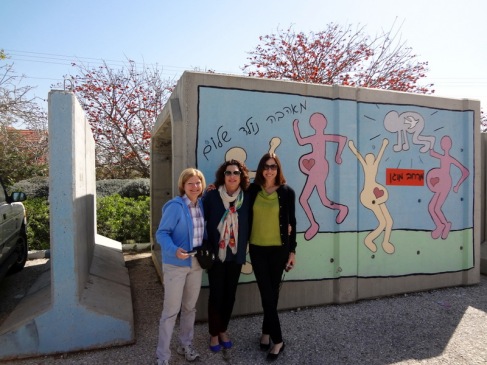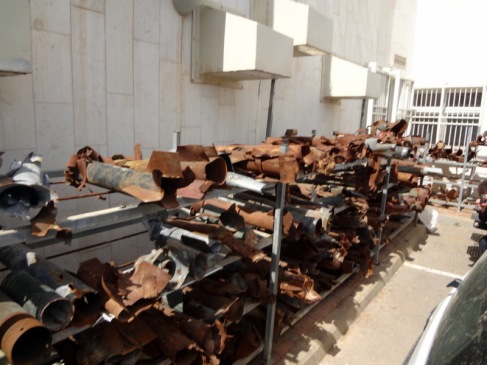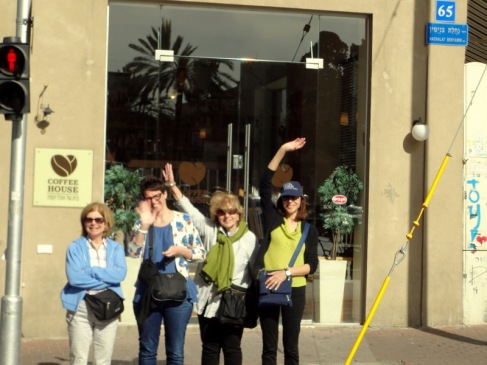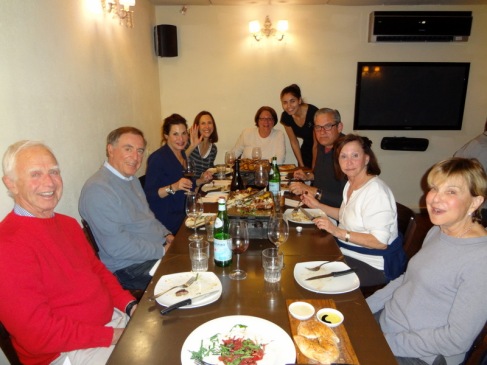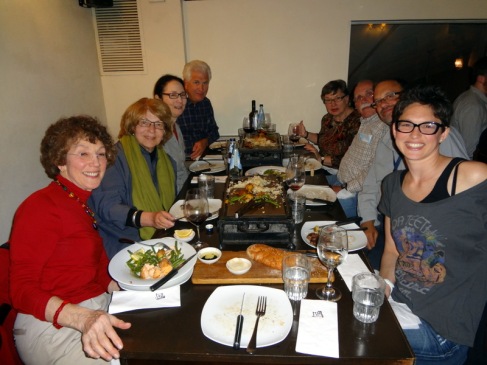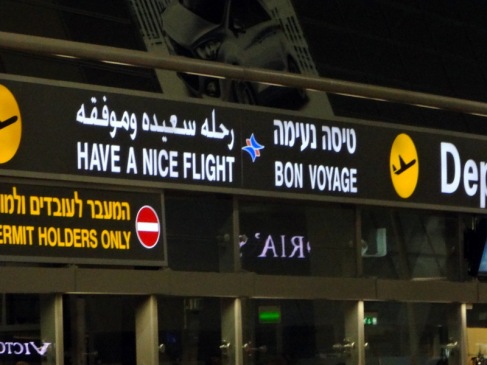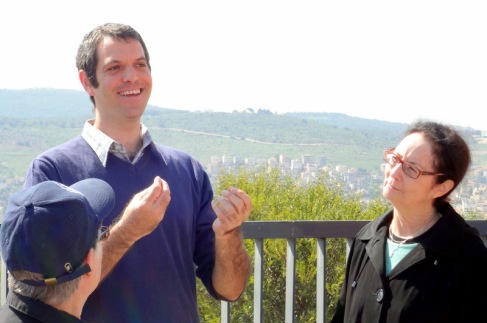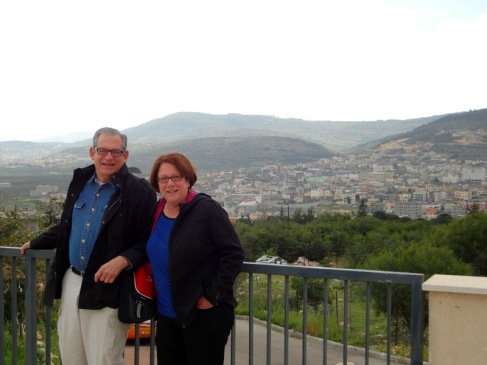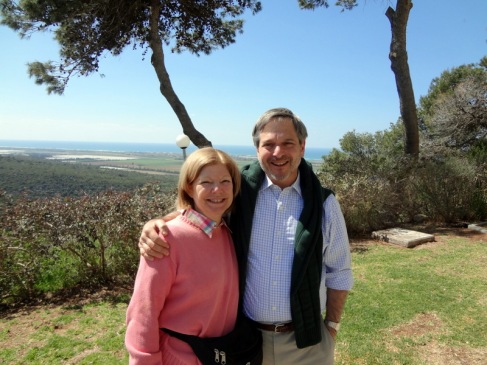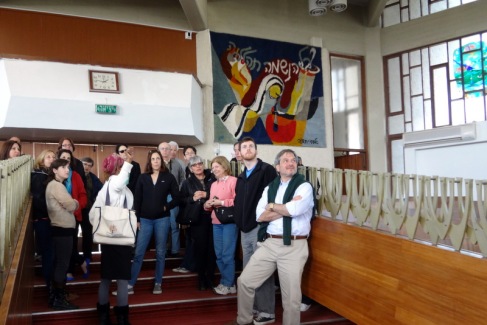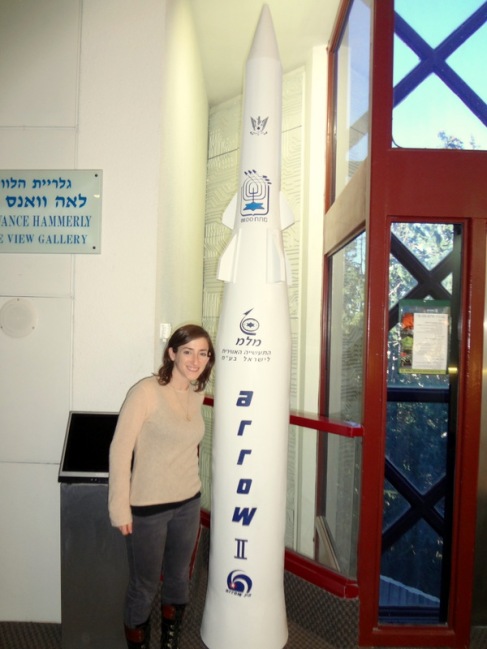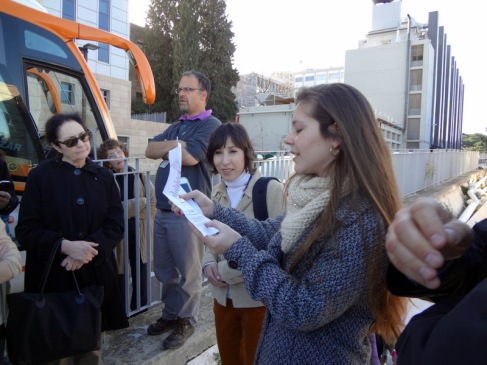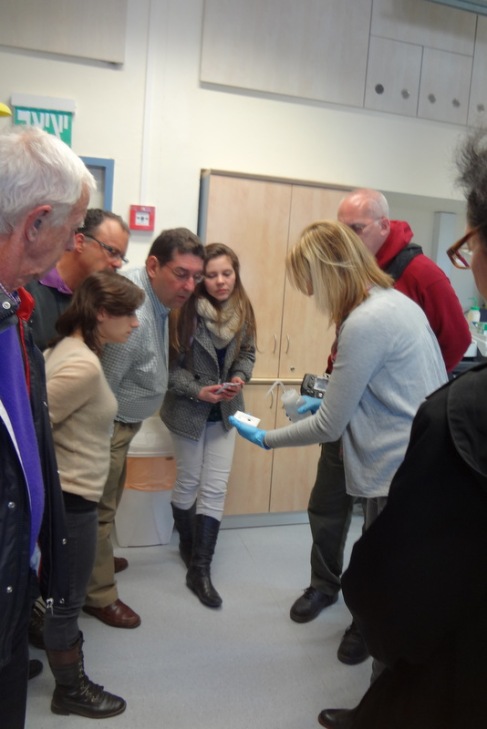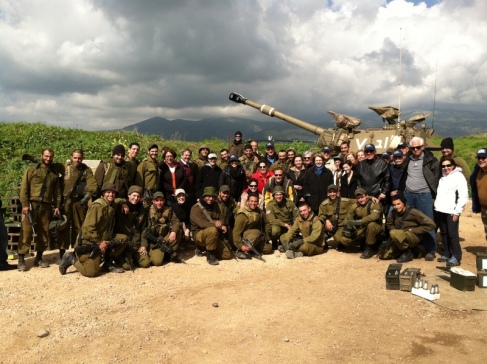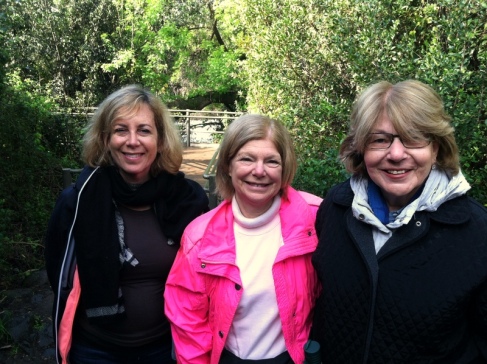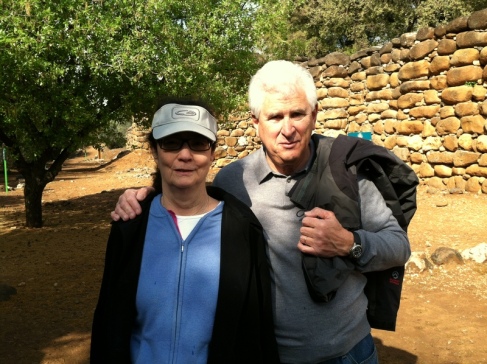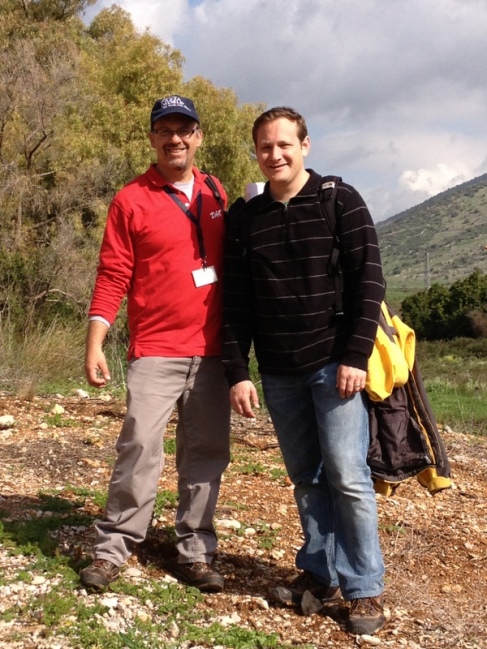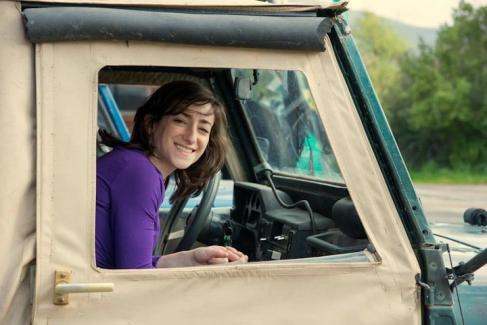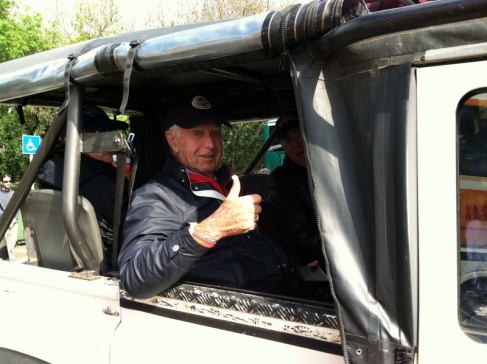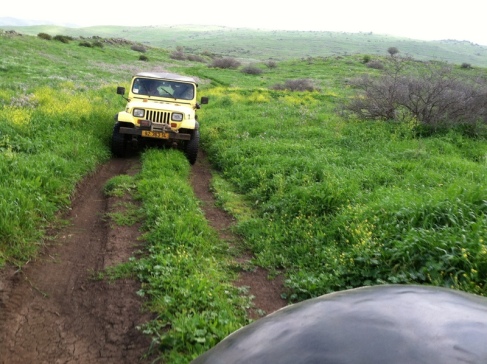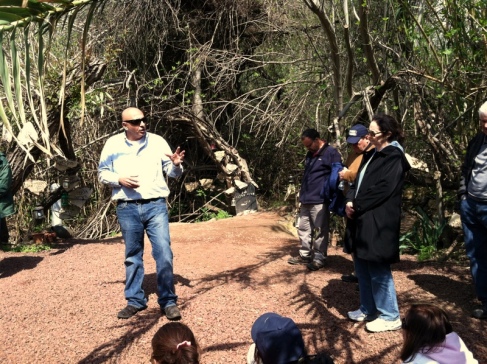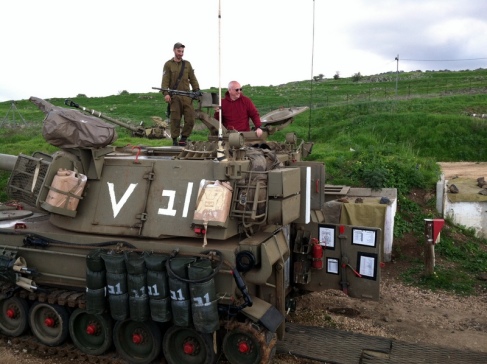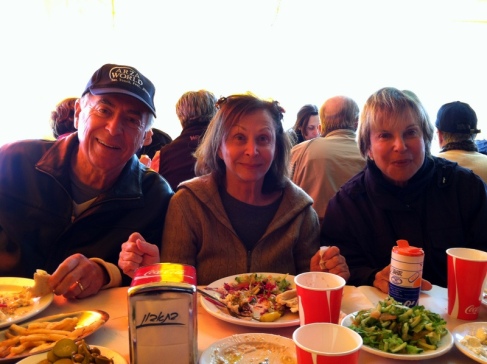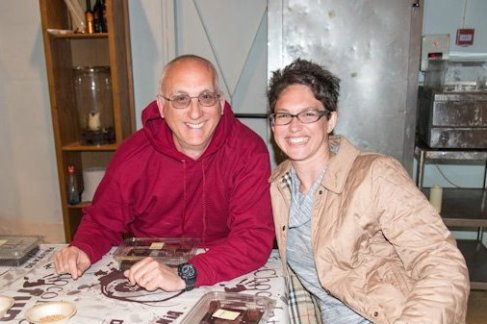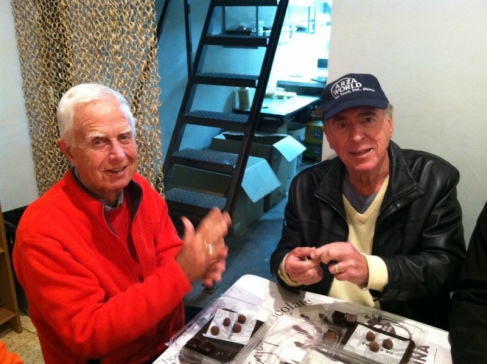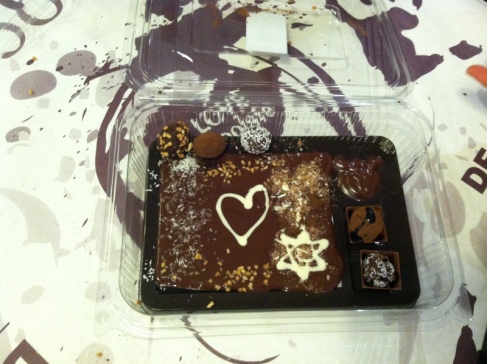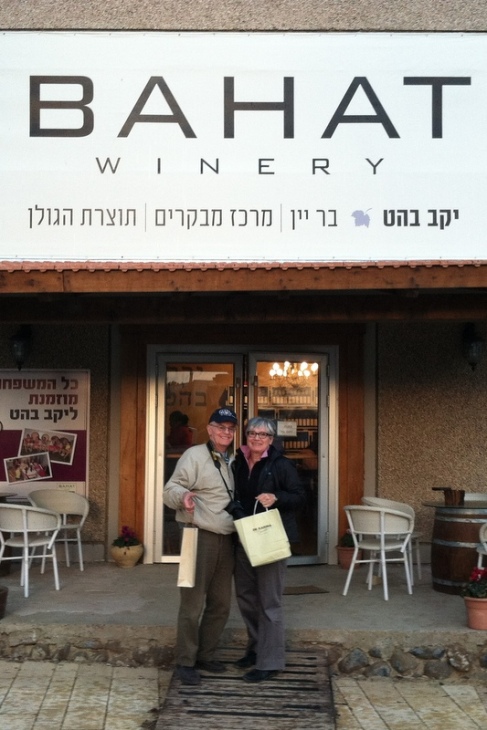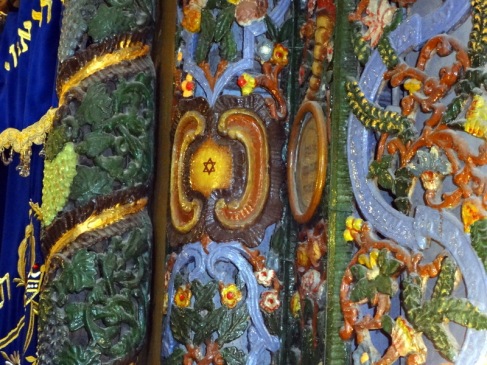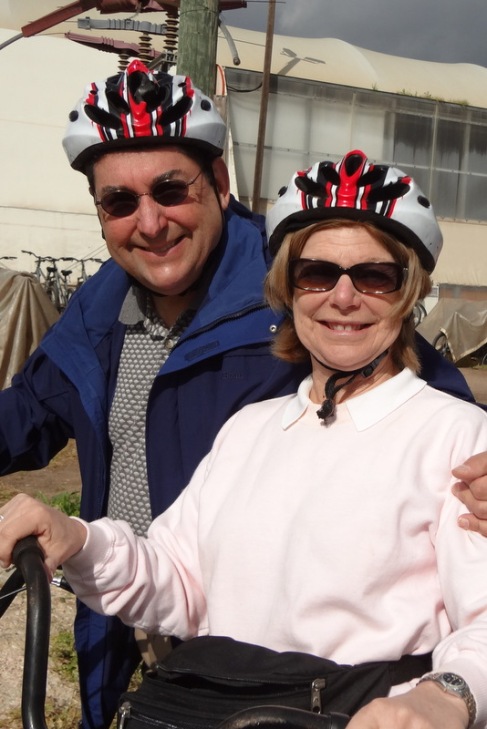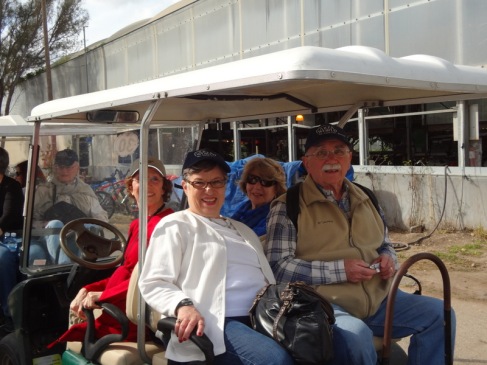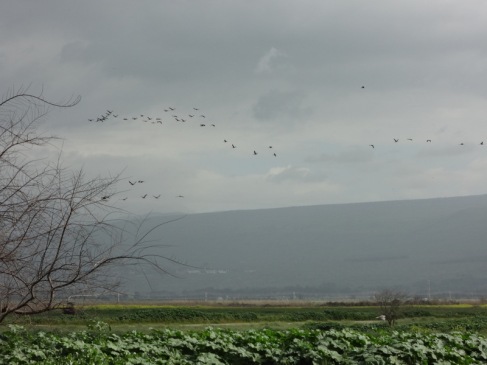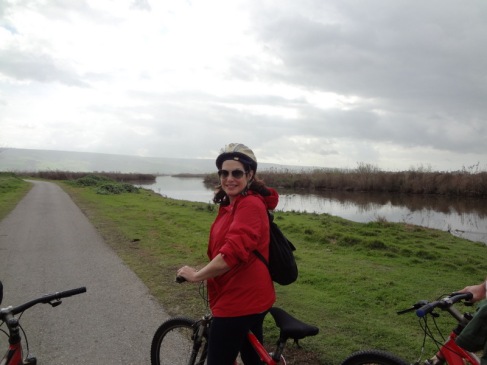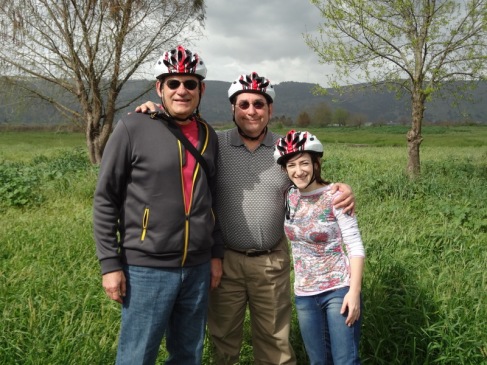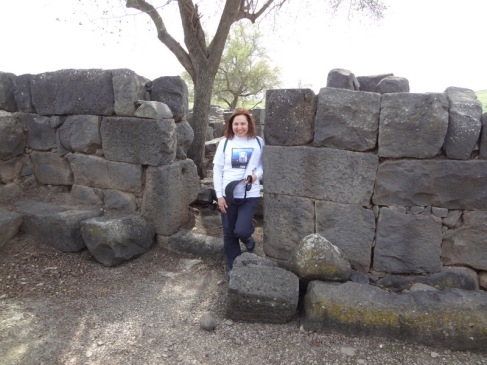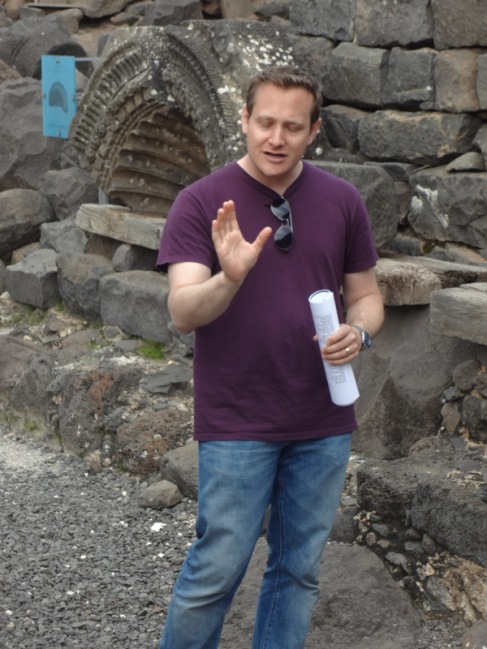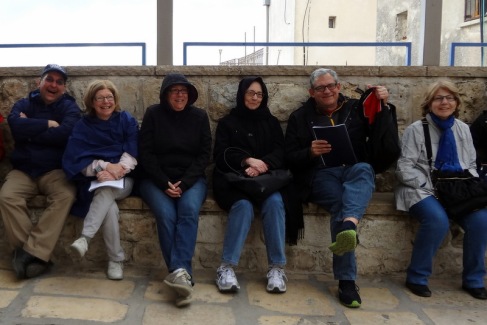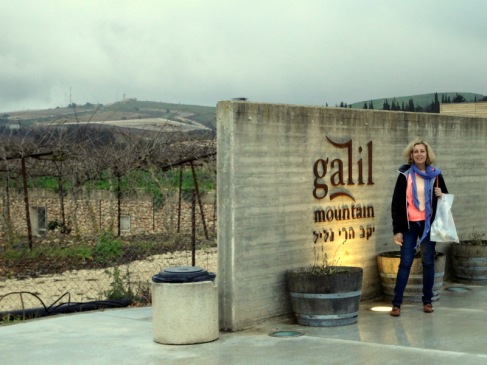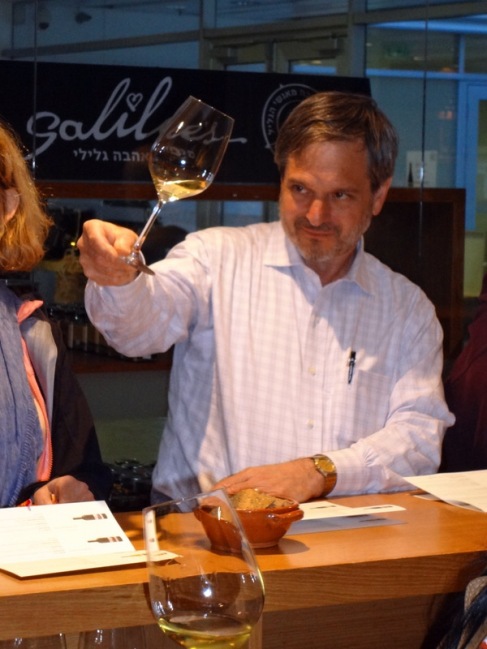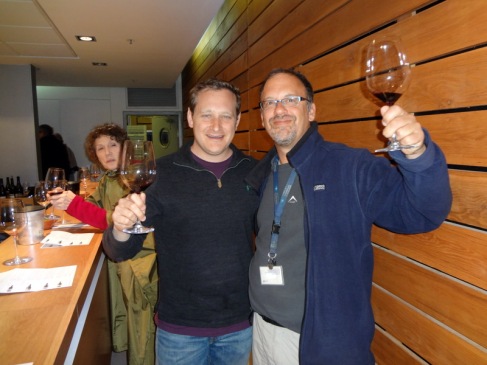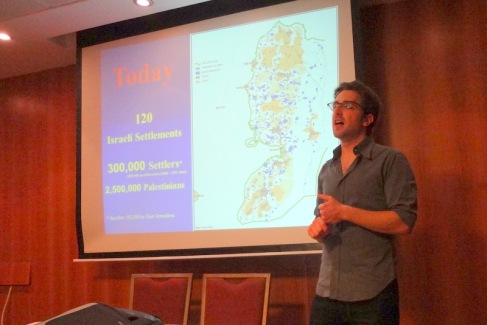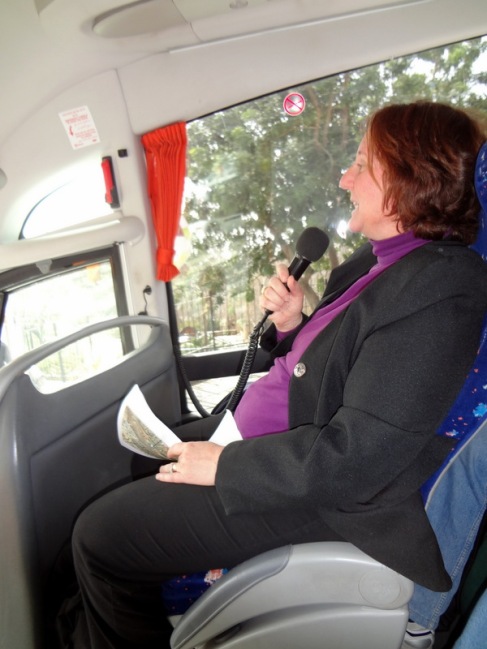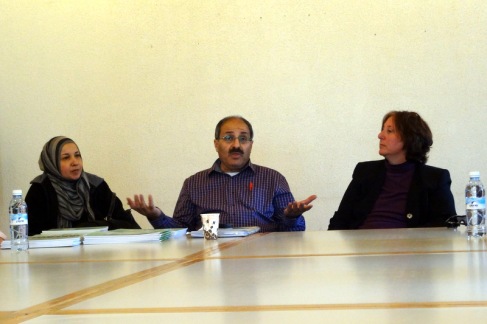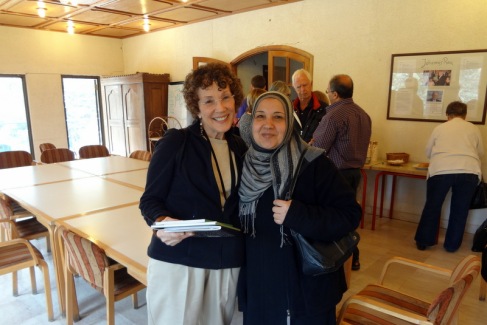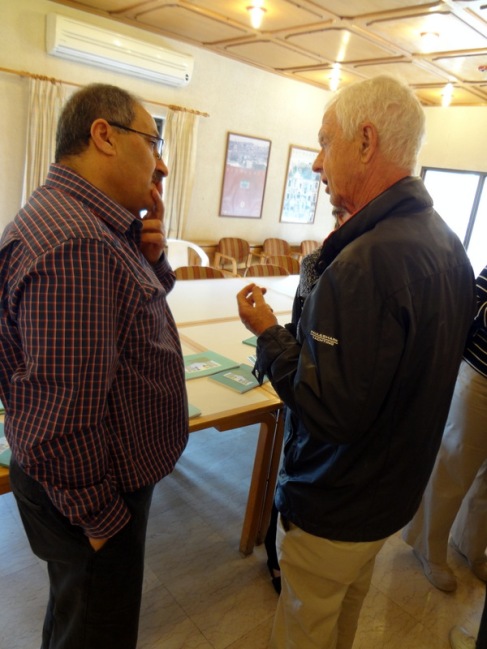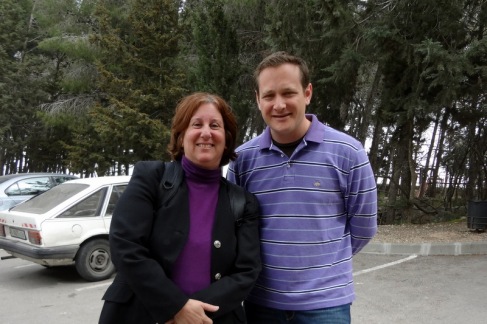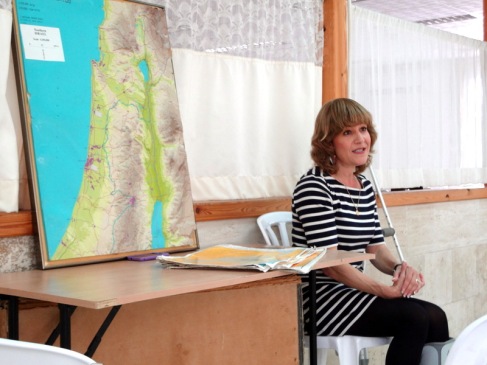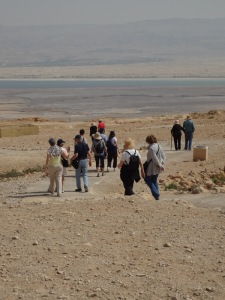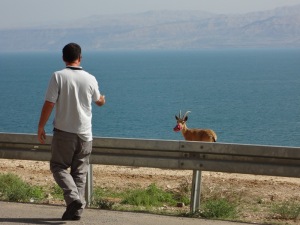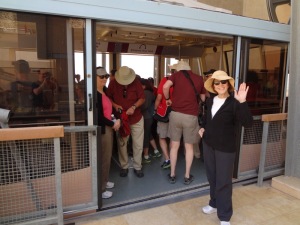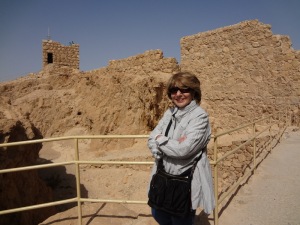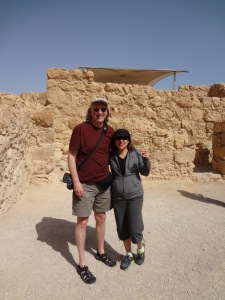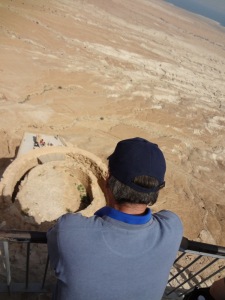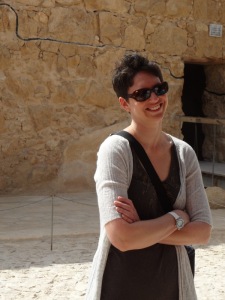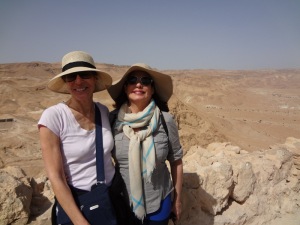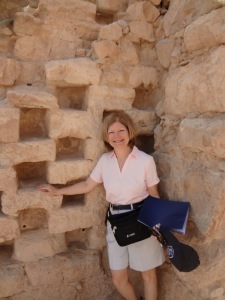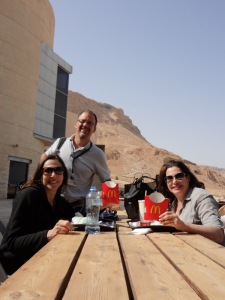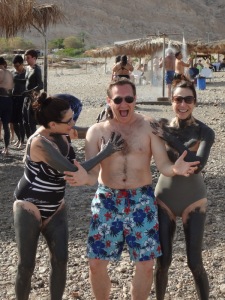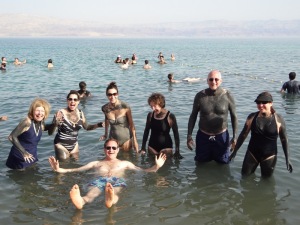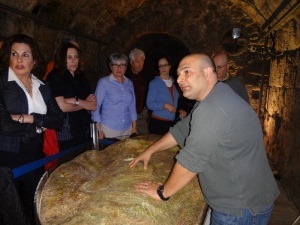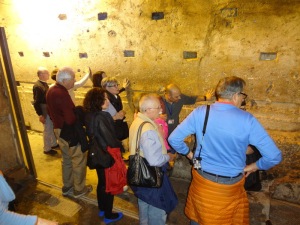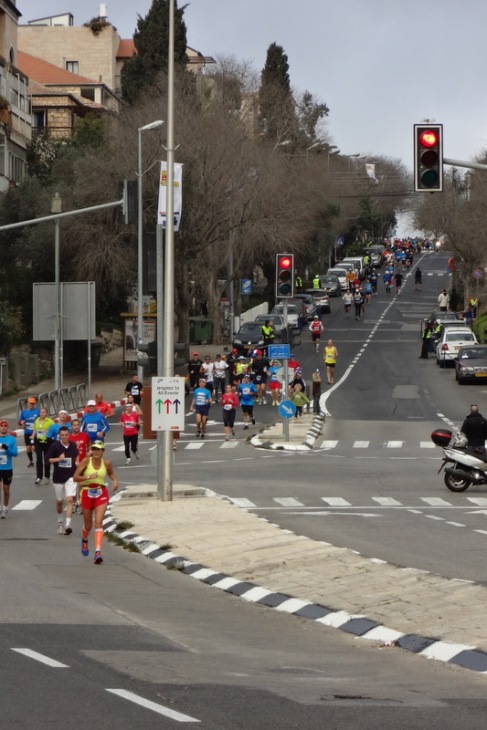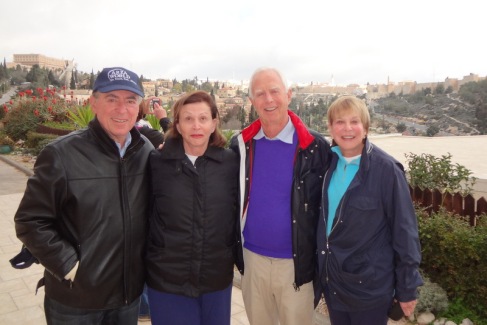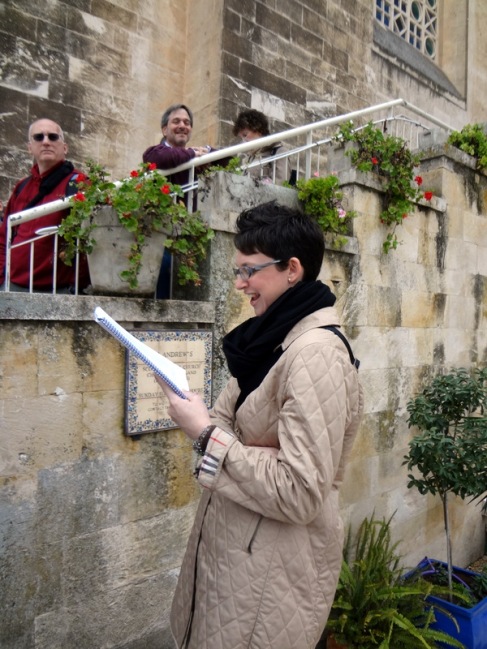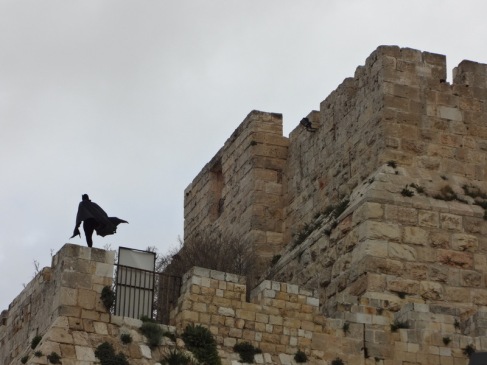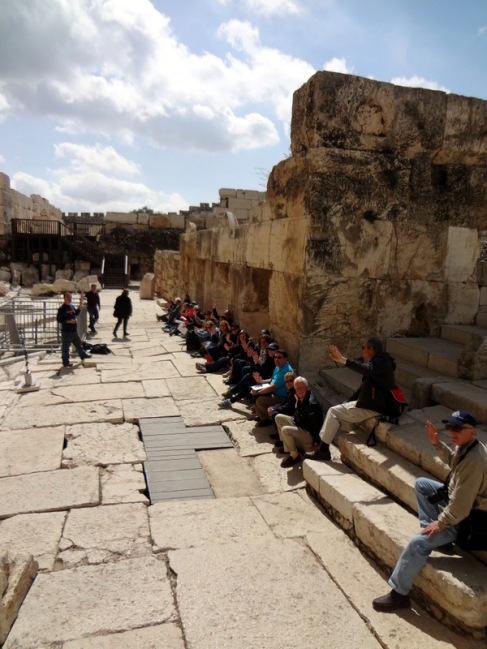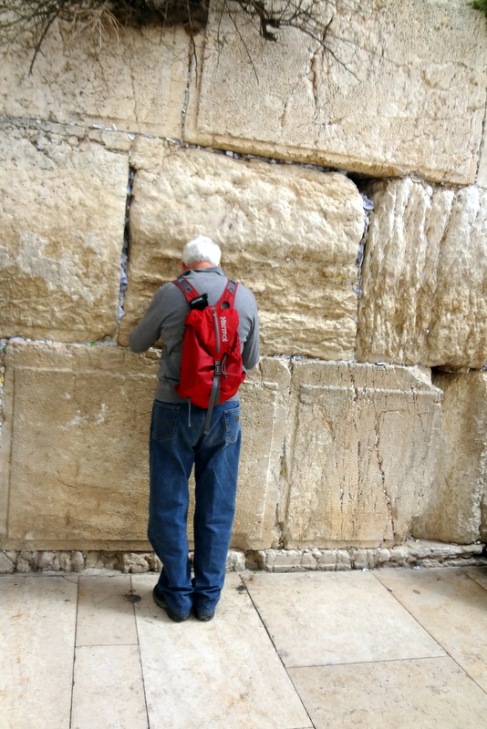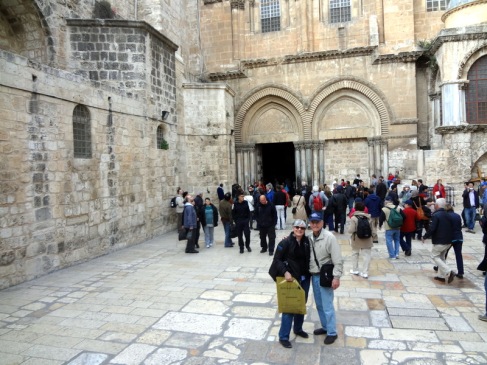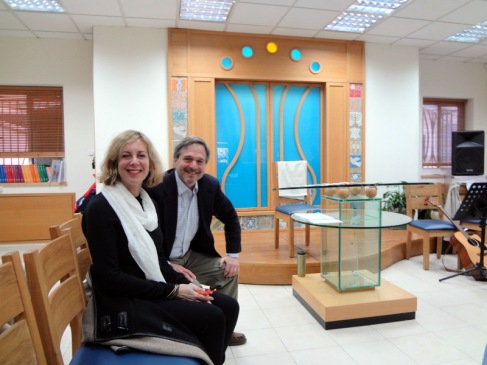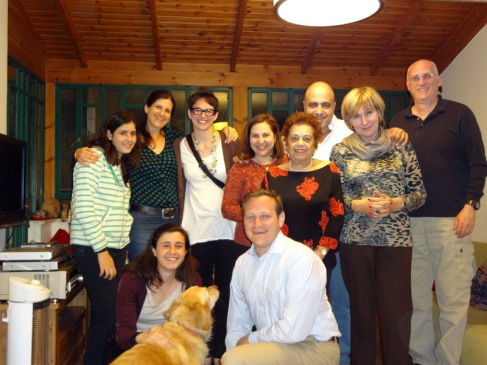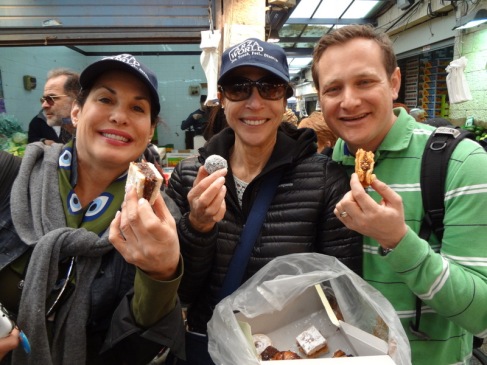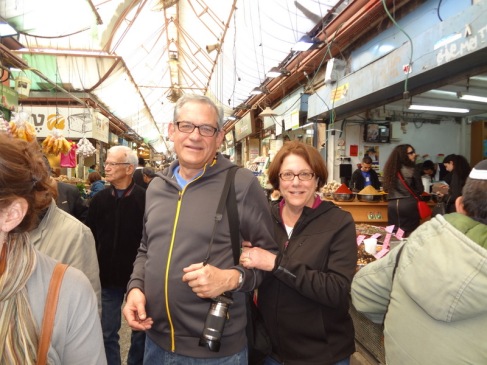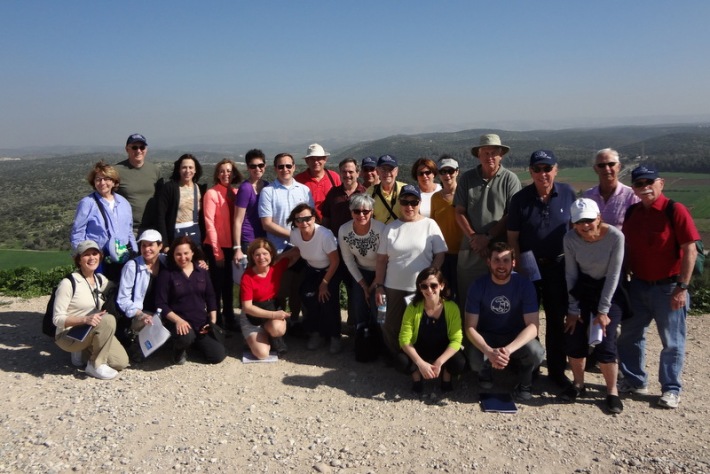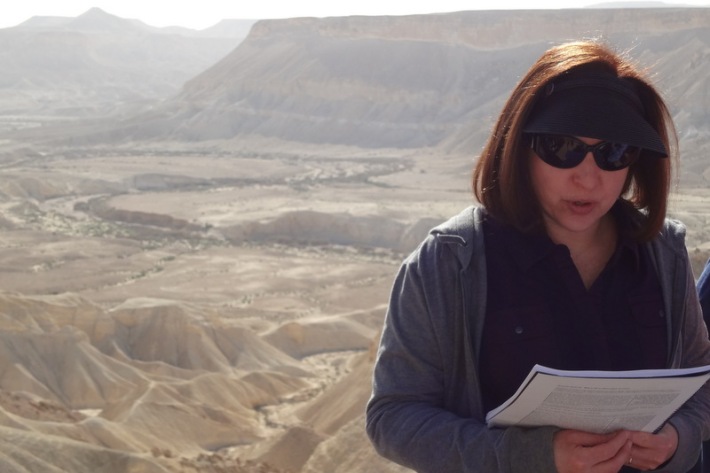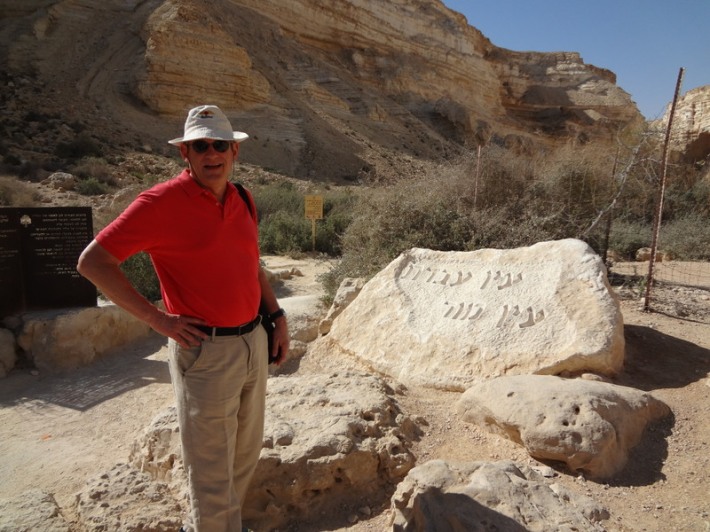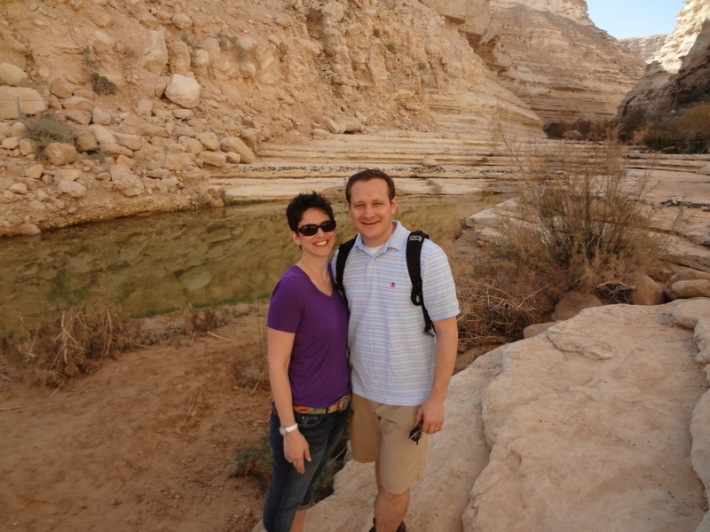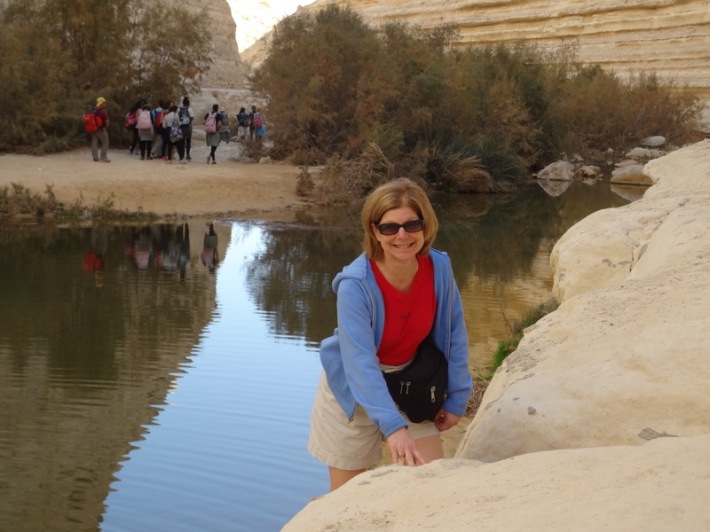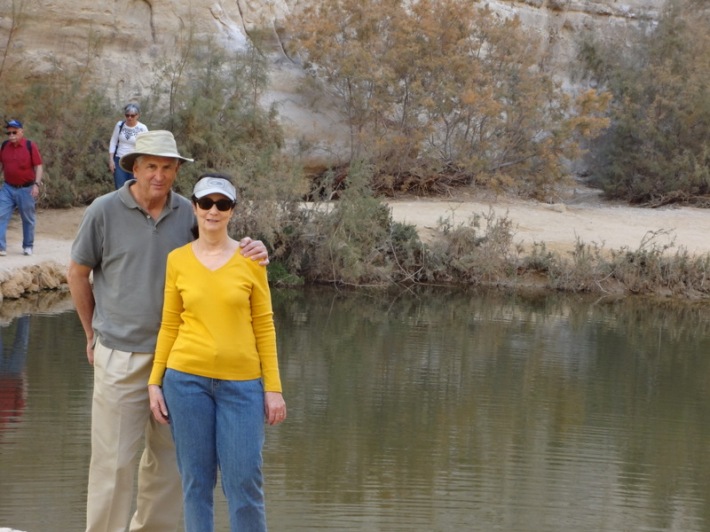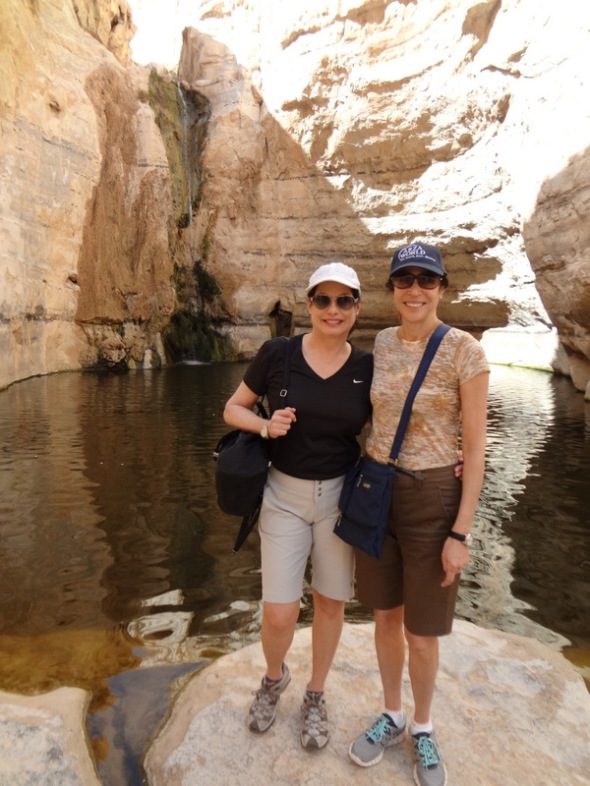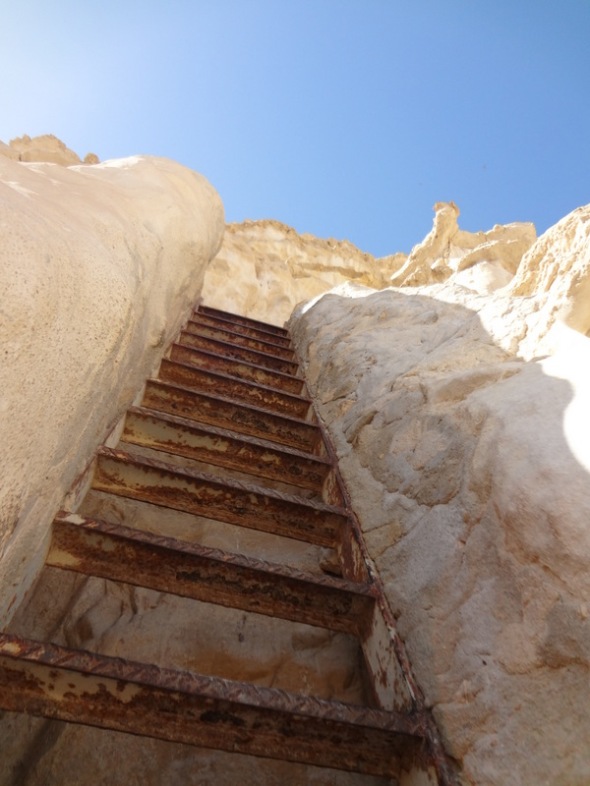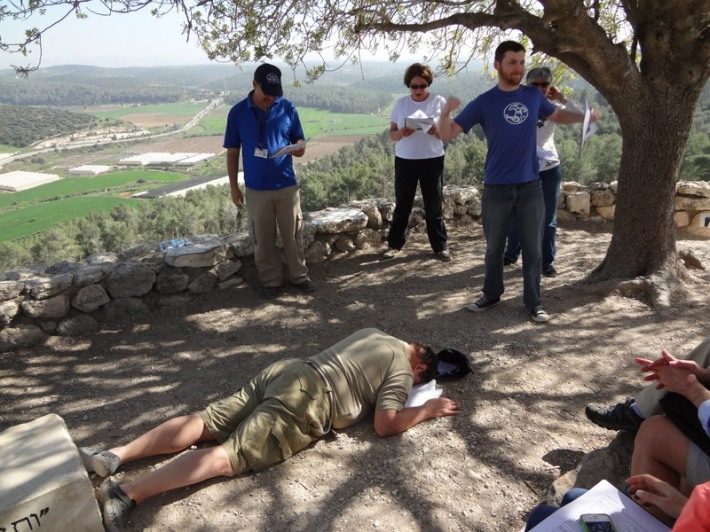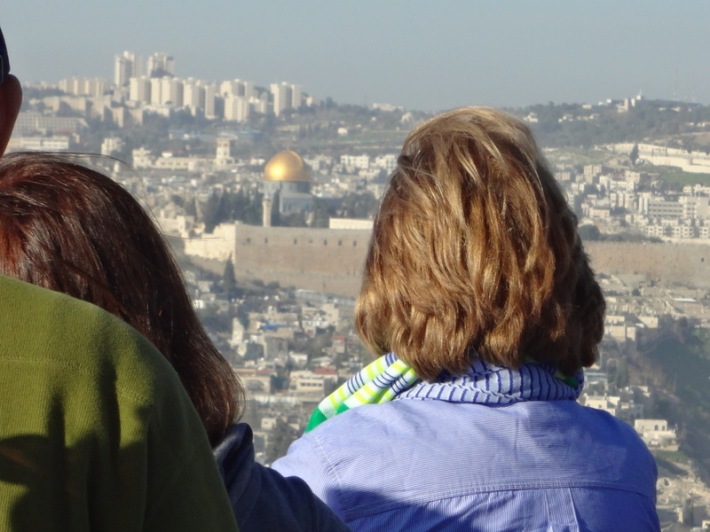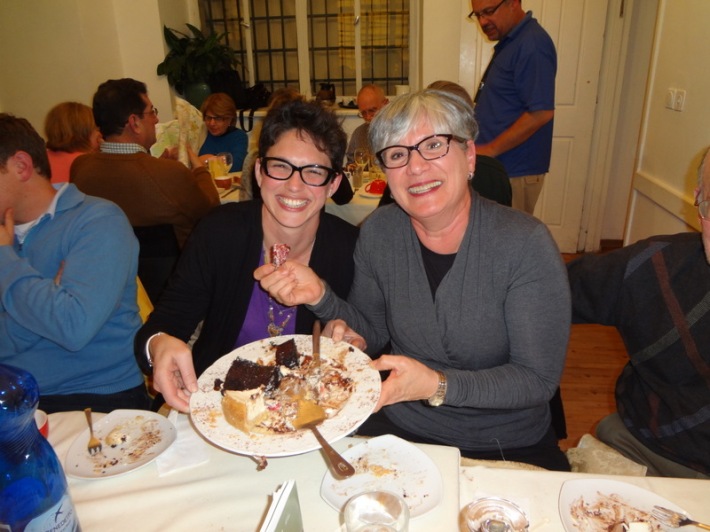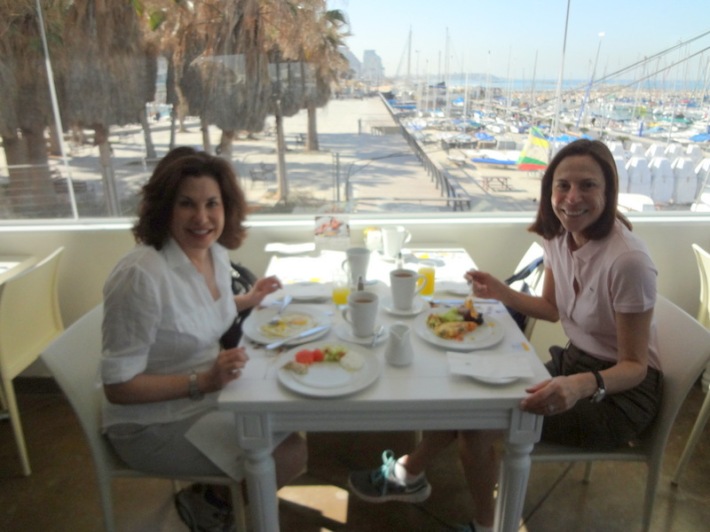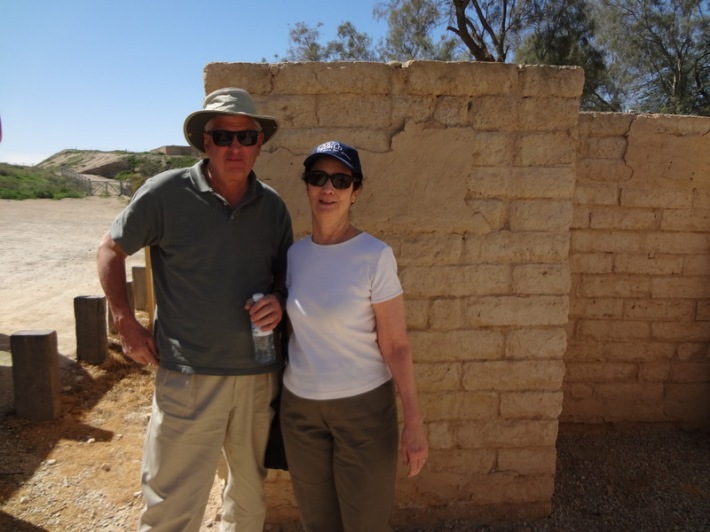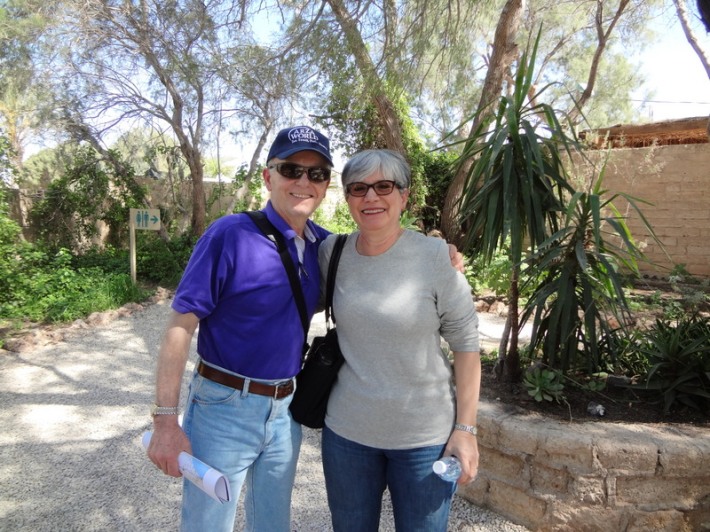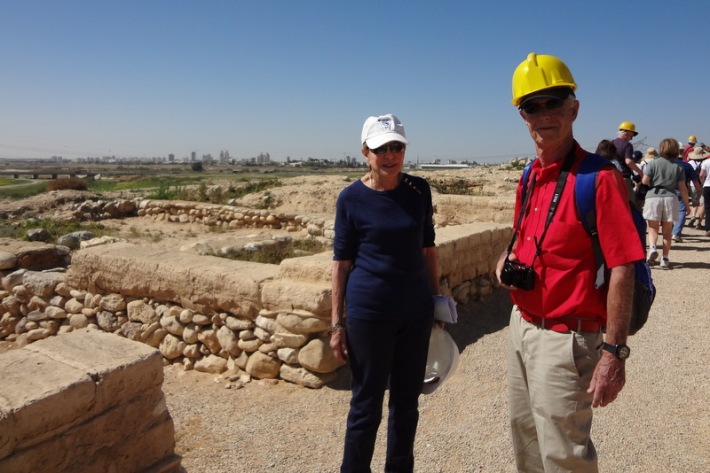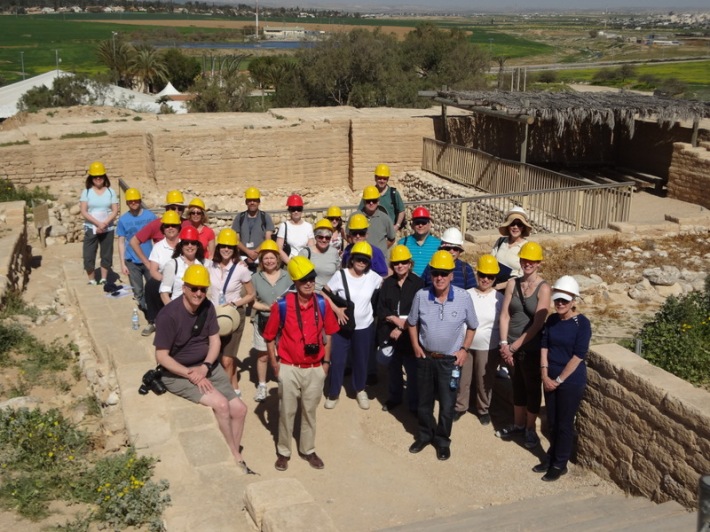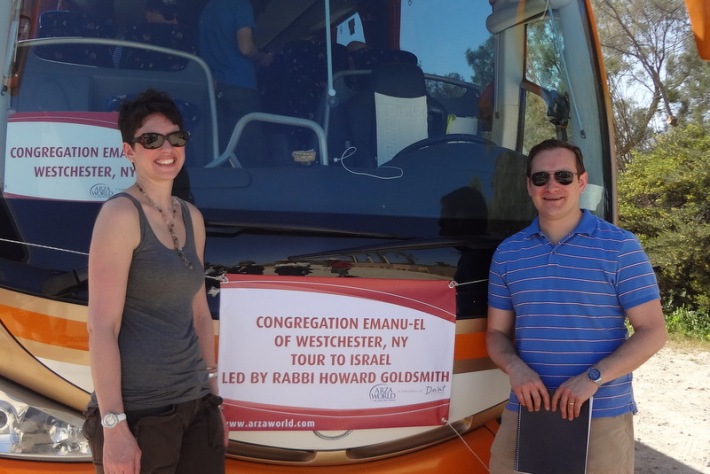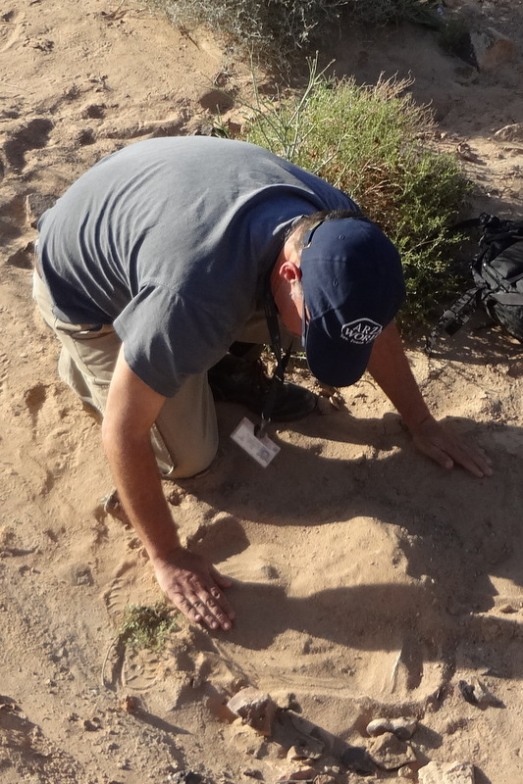The panoramic view of Gaza from Moshav Netiv Asarah
by Rabbi Howard Goldsmith
I sit composing this final blog post on the terrace of our room at the Carlton Hotel in Tel Aviv. The view is of sailboats, seashore, swimming pools and the Old City of Jaffa. As with so much of this trip, the old and the new are juxtaposed in front of our eyes. Yet, now, after 10 days walking the history of our people’s relationship with this land through sites and texts and meetings and lectures, the old and the new make sense together.
Today began with a drive back towards the south. We passed Yavneh where the ancient rabbis recreated Judaism from a sacrificial cult to a religion of study and prayer. We passed IKEA where every Israel makes an annual pilgrimage for their annual sale. We passed ancient groves of olive trees and wheat fields where nothing has changed for a millennium. We passed the modern port city of Ashdod where most of Israel’s goods arrive. And finally we came to a small moshav, a small village called Netiv Asara which sits on the border with the Gaza Strip.
A man named Roz told us about life on the Moshav. How it was founded by settlers who has been removed from the Sinai peninsula after the peace treaty with Egypt. How it was firmly within Israel’s borders but nevertheless suffered from shelling from Gaza. How their children developed the instinct to run to bomb shelter the instant they hear a siren and how then can return to the playground and pick up their game 5 minutes later as if nothing had happened. We learned that 90% of the people who live in the moshav get some sort of counseling to help deal with the stress of living so close to Gaza. We drove through their neighborhood of beautiful homes and could see why there is a long waiting list to get a house in the community. And then we stood on a sand dune and looked into Gaza. In the distance Gaza City and up close villages and refugee camps. We got back on our bus and Roz said, “You Americans are so polite so you’re not asking the question that is on your mind: You seem normal so why the hell are you living here?” Roz answered his own question, “I live here because no bit of violence or threat of violence is going to move my stubborn ass from this land, from our land, from a single inch of Israel.”
Next stop was a look at the Erez Crossing, the main crossing point for goods and people into and out of Gaza. Twenty years ago Gazans and Israelis lived in symbiosis: Palestinians crossed the border each day to work in Israel and returned with money to support their families. Israelies went to Gaza for the best Eastern goods and the celebrate weddings with their neighbors. Goods were traded freely at this crossing point and others like it. Today, few people cross and then only for humanitarian or medical reasons. It is not a hermetically sealed border. Each day, for instance, four truck loads of cement enter Gaza from Israel and enough food for the whole population of Gaza. And yet, the crossing has the deserted feel of a place forgotten by populations that cannot coexist, for whom symbiosis has completely broken down.
Our final stop in the south was the police station of the city of Sederot. After going through a gate we gazed at hundreds of remains of missiles that had landed in and around the city. Over 6 years 7,000 missiles fell from the skies after being fired from Gaza. We could not help but ask ourselves how long the US would take to respond to this kind of attack from a neighbor. Surely we would not have the restraint shown by Israel: 6 years and 7,000 missiles before answering with force this past fall.
Our day then lightened up. We enjoyed a lunch at a local sandwich joint in Sederot and then headed back to Tel Aviv. We viewed the mosaics that tell the history of Tel Aviv inside the Shalom Tower. We then walked up Rothschild Boulevard imagining the sand dunes that were hear only 104 years ago and the visionary Jaffa residents who came to build a modern suburb outside the ancient, crowded city of Jaffa.
After a quick coffee and ice cream (of course) break, we entered Independence Hall. A short film told us the story of the founding of Tel Aviv and the declaration of the State of Israel by David Ben Guion. We then entered the hall and heard the recording of that fateful moment. As the strains of the Israeli national anthem, Hatikvah, entered the room, there wasn’t a dry eye in the place.
Back on my terrace at the Carlton Hotel a plane comes in over the hotel from the Mediterranean headed to Ben Gurion Airport. I wonder who is on that plane. New immigrants, Israelis returning home, tourists coming to visit? Tourists coming home. As we head to our homes in the United States, each of us sense the truth and the power in the words of the Israeli national anthem Hatikvah: L’hiot am chofshi b’artzeinu eterz zion virushalayim, “To be a free people in Our Land, the Land of Israel and Jerusalem.” Though we do not live here, we now know that this land is our source. It is the place where our ancestors wrote our sacred texts. It is the site of our most treasured stories. It is the place where Jews have reinvented themselves time and again: a family, a nation, a state, a religious community, and again, as a State for our Nation in our Land. It is the land of the modern day Israelis. It is also Our Land. We have forged a connection that we will always cherish and foster and celebrate.
L’Shana Haba’ah Birushalayim, Next Year in Jerusalem!
P.S. A funny anecdote from today: When it was time to leave the Gaza overlook with Roz an Israeli military patrol vehicle was blocking the road. The driver was not in the truck… and the soldier in the passenger seat was fast asleep. So Roz went over to wake the sleeping soldier so he would move the vehicle. He wouldn’t. So, as only an Israeli would, Roz opened the drivers side door, turned the key in the ignition, and moved the vehicle out of the way. A round of astounded applause greeted him as he got back on the bus. Only in Israel!!
Hanging out in the Netiv Asara community center
Roz explaining the history and life of the Moshav
Wendy and Marcie outside the synagogue at the Moshav
Roz explains the extra security measures taken to protect buildings in the Moshav
Marcie, Ellen and Marlene outside a bus stop/bomb shelter on the Moshav. The image honors the baby boom that took place 9 months after the last Gaza war from all the time in the bomb shelters with nothing to do…
An artist’s installation on the wall with Gaza. It says “pathway to peace”
John gazes into Gaza
A view of the Erez Crossing from the Moshav
Roz getting in to move the in-the-way army jeep
Arthur, Marylin and Barrie entering the Sederot Police Station
Some of the Kasam rocket remains collected by the Sederot police
A close up of a Kassam
The mosaics in the lobby of Shalom Tower in Tel Aviv. Read their story HERE.)
Bye bye from Tel Aviv!
Farewell dinner
Farewell dinner
Farewell dinner
Next year in Jerusalem!


